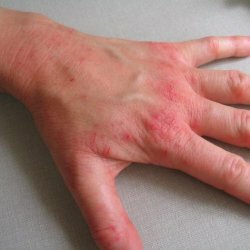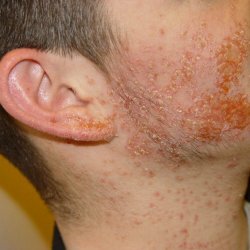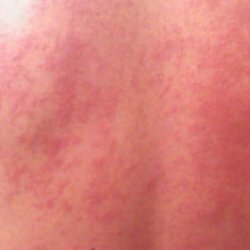Eczema
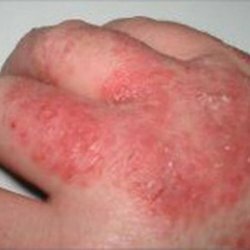 Eczema is a chronic inflammation of the skin in children and adults. Until now, there are no precise reasons for the development of eczema. But they suggest that allergies, skin contact with substances that irritate it, hereditary predisposition, etc., plays a role in the development of this disease. Depending on the type of eczema, the symptoms, signs and treatment of eczema differ.
Eczema is a chronic inflammation of the skin in children and adults. Until now, there are no precise reasons for the development of eczema. But they suggest that allergies, skin contact with substances that irritate it, hereditary predisposition, etc., plays a role in the development of this disease. Depending on the type of eczema, the symptoms, signs and treatment of eczema differ.
Types of eczema
Eczema types include true, atopic, contact, dishydrotic, microbial, occupational, seborrhoeic, etc. Each species is a separate disease that has its own characteristics. Let's consider some of the most common ones.
Atopic eczema
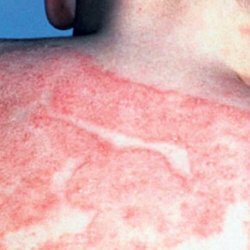 Atopic eczema usually begins to appear at the age of up to two years, often in the first months of life. According to experts, from 5% to 15% of schoolchildren have atopic eczema, but fortunately, the situation often improves when a child becomes older. Sometimes eczema worsens in adolescence or adolescence. People who in childhood suffered from atopic eczema, often have dry, flaky skin. Because the causes of atopic eczema lie in internal disturbances, stressful stresses can trigger a new outbreak. And most of the time, eczema may not appear, but when the stress level becomes too high, it flares up with renewed vigor.
Atopic eczema usually begins to appear at the age of up to two years, often in the first months of life. According to experts, from 5% to 15% of schoolchildren have atopic eczema, but fortunately, the situation often improves when a child becomes older. Sometimes eczema worsens in adolescence or adolescence. People who in childhood suffered from atopic eczema, often have dry, flaky skin. Because the causes of atopic eczema lie in internal disturbances, stressful stresses can trigger a new outbreak. And most of the time, eczema may not appear, but when the stress level becomes too high, it flares up with renewed vigor.
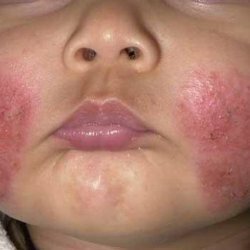 Of course, those suffering from atopic eczema are more likely to be prone to contact allergies.
Of course, those suffering from atopic eczema are more likely to be prone to contact allergies. Contact Eczema
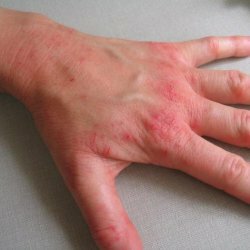 Another type of allergic eczema is contact eczema, caused not by internal mechanisms of atopy, but by external stimuli. Such eczema is associated with allergies to specific substances, such as nickel, rubber, cosmetics, household chemicals, varnishes, paints and what is very common, adhesive patches. Eczema of this type more often affects adults who develop allergies to a certain substance after a single or repeated application.
Another type of allergic eczema is contact eczema, caused not by internal mechanisms of atopy, but by external stimuli. Such eczema is associated with allergies to specific substances, such as nickel, rubber, cosmetics, household chemicals, varnishes, paints and what is very common, adhesive patches. Eczema of this type more often affects adults who develop allergies to a certain substance after a single or repeated application. Occupational eczema
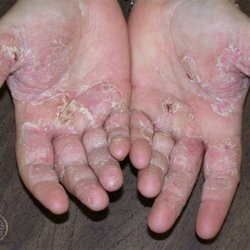 Occupational eczema occurs when sensitized to a substance with which a person contacts at work. It may not develop immediately, sometimes it takes several years to work with this substance. It is essential that those parts of the body that are in direct contact with the allergen are damaged, most often the hands. This happens, for example, when chemicals get on the skin or as a result of wearing rubber gloves.
Occupational eczema occurs when sensitized to a substance with which a person contacts at work. It may not develop immediately, sometimes it takes several years to work with this substance. It is essential that those parts of the body that are in direct contact with the allergen are damaged, most often the hands. This happens, for example, when chemicals get on the skin or as a result of wearing rubber gloves. Symptoms and signs of eczema
- The skin appears to be soaked, a site of limited inflammation appears on it, which is characterized by either blueness or redness.
- On the site of the skin, inflammation of the rash, for different types of skin rashes has its own characteristics.
- Appears skin itching, it can be permanent.
- Painful wounds and fissures are formed when the rash bubbles are opened.
- During the exacerbation of eczema, a rise in body temperature is often observed.
- After the inflammation on the skin subsides, it cracks, becomes dry, loses its elasticity.
Complications of eczema
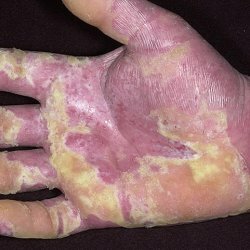 A serious complication of eczema is the development of purulent inflammation on the skin. It manifests itself by such symptoms: on the skin there are vesicles with purulent contents, an increase in body temperature, general health worsens. In this case, the treatment is carried out under the supervision of a doctor in the hospital.
A serious complication of eczema is the development of purulent inflammation on the skin. It manifests itself by such symptoms: on the skin there are vesicles with purulent contents, an increase in body temperature, general health worsens. In this case, the treatment is carried out under the supervision of a doctor in the hospital.
Erythroderma is a formidable complication of eczema, as it seizes almost all of the human skin, so treatment should be done under the supervision of a physician.
Diagnosis of eczema
As a rule, the diagnosis of eczema is performed on examination with a dermatologist. If the doctor suspects another disease that is similar to the symptoms with eczema, then he can prescribe additional methods. These diseases for similar symptoms include psoriasis, scabies, fungal skin lesions and others.
Treatment of eczema
Treatment depends on the type of eczema, prevalence, age of the patient, severity of the course.
This treatment includes several principles:
- Prevention of exacerbation of eczema.
- Local treatment with creams and ointments that have anti-inflammatory effect.
- General( systemic) treatment with agents that suppress immunity.
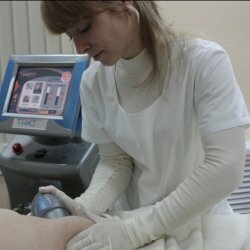 The tactics of treating eczema are chosen by the attending physician only after the examination. Do not self-medicate, because this can lead to complications.
The tactics of treating eczema are chosen by the attending physician only after the examination. Do not self-medicate, because this can lead to complications.
People who have chronic eczema need to know the substances from which they are exacerbated by eczema, they should avoid them. Avoid contact with detergents during exacerbation of eczema. In addition, you need to pay special attention to clothing during the exacerbation, do not need to wear synthetic and woolen clothes, it is best to give your preference to cotton fabrics.
If the exacerbation of eczema occurs during cold weather, care should be taken to protect the skin from drying out in the wind and hypothermia. Before going outside, you can use petroleum jelly and go with fatty creams for hands and face( unless, of course, they are not allergens).
If the exacerbation of eczema comes from emotional stress, stress, in this case the doctor can prescribe sedatives. On the course of eczema, yoga and a measured lifestyle can have a beneficial effect.
When eczema diet should not contain foods that cause allergies( citrus fruits, chocolate, cocoa, etc.) Cereals, vegetable dishes, the diet must necessarily include dairy products. Eliminating
itching eczema at
To eliminate or mitigate itching eczema administered usually antiallergics:. Zirtek, Suprastin, Erius, Tavegil, etc.
Treatment folk remedies
kreolina
The bucket of hot water add 1 tbsp. L.Creole, then the water will be white. Soar your feet and hands in such water for 20 minutes. Do not wipe, let them dry. Then we will apply a thin layer of sore spots to the skin. We do the procedures three times a day, until we completely cure eczema. If the itching starts, we apply the skin with fucinar, and it will all go away.
Salt
We hold in the salt water hands, sick with eczema. We know that salt eats away wounds, but salt also heals eczema. We pour hot water into the pelvis, then add some salt to the eye. We dip our hands into this solution and hold them until the solution cools down. Then we will wet the hands with a towel and apply the cream. For the procedure we use sea salt, if several times we do this procedure, then we will quickly notice the result.
Ointment from dying eczema
Take three identical glasses. The first drink we break a raw egg without the shell, pour another glass of water, and pour into a third glass of vinegar. All glasses should have the same amount of content. Then we pour into a can of 250 g, cover it with a lid and shake it until we get a mass resembling a cream.
At night, we lubricate the entire foot with a thin layer, we put cotton socks on top and sleep in them until morning. In the morning we do not wash off, we will put on clean socks. In the evening, wash your feet without soap, wipe dry and apply ointment to the affected area. In the beginning, old skin will peel, and a pink new skin will appear.
Mother-and-Stepmother
Let's miss the mother-and-stepmother through the meat grinder, then add the fresh milk. This composition is applied to the skin, affected by eczema. Then we wrap the paper with paper that can not get wet, or we use a film and wrap it with a napkin. We do this for the night. It takes 3 procedures to prevent eczema.
Grapes
Take a small sprig of dark grapes and berries rastolchem, then this structure put in cheesecloth and apply daily for 2 hours to the affected areas of the body. We do the procedure for 21 days. Then we'll have a break for ten days and then start treatment again.
Licorice with sea salt
Take in equal proportions dry licorice grass and sea salt. We will move this composition and put it on the affected areas, then we'll bandage and hold for one hour. We do not tighten the bandage much. After an hour, remove the bandage and wash the mixture with apple cider vinegar. The procedure is done for three days, then we make a break for 3 days, and again we will repeat. Ulcers will pass, and by 9 days they will heal.
Fir oil from wet eczema
Take 40% of pine oil and 70% unsalted pig, badger or goose fat or baby cream. The composition is well stirred and applied to a sore spot. This procedure is done 24 days, three times a day. For treatment we use Tibetan collection. Fall 2 tbsp. L.This collection of 100 ml of boiling water, we insist in the thermos for about an hour. We use a warm composition 20 minutes before meals twice a day for 200 ml.
Copper vitriol from the wetting eczema
Take the copper sulphate on the tip of the knife and dilute 200 ml of boiled water. We get water with a bluish tinge. This composition wet the sore spots. When the wounds dry up, we smear wounds with white lily oil or use sea buckthorn or vegetable oil. The course of treatment is 1 time per day.
Sour cream
Take 1/3 tsp. Copper sulphate and 100 grams of cream or fresh sour cream. Lubricate a thin layer for 2 hours before sleep, a little poderzhim and smoem.
Juice celandine
Drink up to 30 droplets and then move back, and reach 1 drop. We treat eczema for two months. Powder of leaves and grass mixed with unsalted butter in a proportion of 1: 5, and smear the diseased skin.
Wide eucalyptus
Suitable for all kinds of editions. We use it as lotions. Take 100 grams of leaves and brew it in 200 ml of boiling water. We insist an hour. We filter, and except for external use we take inside, like infusion three times a day for one third of the glass.
Aloe from eczema
Apply in its pure form externally( juice, gruel), and in the form of ointments. Grind the leaves and mix with creamy unsalted butter, in a ratio of 1: 4.Lubricate affected areas of the body twice a day.
Solidol
Take a solidol and smear it with sore spots, then rewind it with thick paper, and wrap it around the surface with a cloth. There will be severe itching, but you need to be patient. In a month, everything will pass and there will not even be any scars left.
Kalanchoe from wet eczema
Squeeze the juice from a Kalanchoe leaf, moisten a sterile piece of bandage and apply it to the sore spots. After the first time, we will see how the tissues turn pale, and after a few days we will see how this recipe will help to heal the wound. Full recovery will come quickly.
Seabuckthorn
Often these diseases are affected by people who do not have enough vitamin A in the body, and it is in large quantities in sea buckthorn. Try in any form and often use sea-buckthorn, a month later eczema will pass.
Recipe will help from wet eczema
Take 30 ml of iodine and 100 g of pure gasoline. Shake well and in this composition we will dabble cotton wool and we will rub the sore spots. Wash them beforehand and dry them well. To heal, you will need six procedures.
In conclusion, we add that the treatment of eczema with folk remedies can be carried out only after consulting with your doctor.

